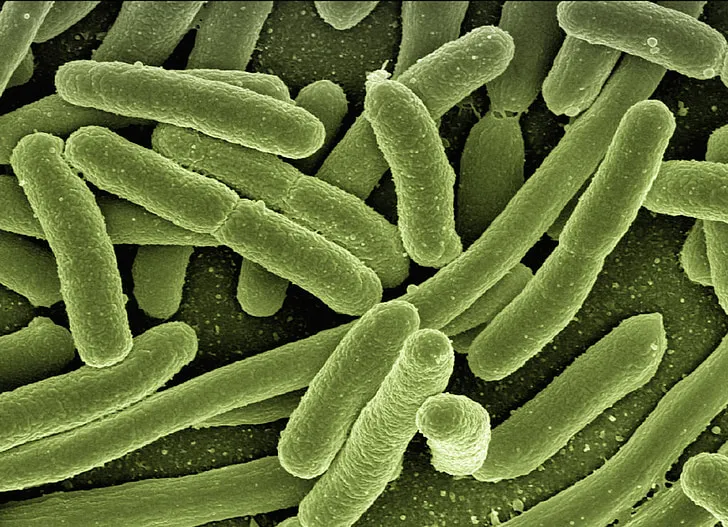Landfill Gas Generation Meaning, Principle and Phases Explained
Landfill gas generation refers to the steps, phases, and overall process by which gaseous renewable fuel is produced from waste materials in a landfill.
This article discusses landfill gas generation meaning, principle, and phases; as outlined below;
-How Landfill Gas is Generated: Principle of Landfill Gas Generation
-Phases in Landfill Gas Generation
How Landfill Gas is Generated: Principle of Landfill Gas Generation
Landfill gas is generated by the breakdown of organic waste materials in landfills, as a result of the activities of bacteria and other microorganisms, and through both aerobic and anaerobic biochemical reactions like acetogenesis, hydrolysis and acidogenesis.
Methane constitutes a major proportion of landfill gas, often exceeding 50% of the total gas composition [2]. The exact percentage of methane to carbon dioxide again depends on the type of biomass involved, and the prevalent physicochemical conditions.
During decomposition, volatile organic compounds from the waste are lost to the environment, alongside other constituents that are utilized by microbes for their metabolism, or fixed in the soil as nutrients.
The end-product of these processes is a renewable energy-rich gas which can be used as a source of bioenergy for electricity generation and heating.
How much landfill gas is produced is a function of multiple variables that include the rate of decomposition, carbon-concentration of organic waste, temperature and pH, among others.
For every 1 million tons of organic landfill waste, between 432,000 and 2.5 million tons of landfill gas are produced.
Phases in Landfill Gas Generation
The five(5) phases in landfill generation are; hydrolysis, acidogenesis, acetogenesis, methanogenesis and maturation.
However, these phases all fall within the stage of biochemical transformation; which does not cover all stages of the entire landfill gas generation process.
The overall process of landfill gas generation is made up of three stages; biodegradation, volatilization, and biochemical transformation.
Although biodegradation is also a process of biochemical transformation, it is more convenient for the term (biochemical transformation) to be used in reference to reactions like hydrolysis and methanogenesis.
In place of ‘biochemical transformation’, the third stage of landfill gas generation can be referred to as ‘chemical reaction’ or ‘biochemical reaction’.
Each of the five phases in landfill gas generation is discussed below;
1). Hydrolysis (as one of the Phases in Landfill Gas Generation)
Hydrolysis is the first major form of biochemical transformation that sets the stage for landfill gas generation.
It occurs mainly under aerobic conditions, and commences as waste is exposed to oxygen under conditions that favor microbial conversion of organic compounds.
The most complex polymeric compounds in landfill wastes, usually breakdown in this phase.
Products of such breakdown include less-conplex organic monomers like amino acids, fatty acids, and simple sugars [1].
Hydrolysis may also occur under partially anaerobic conditions, and is one of the processes responsible for leachate formation, which is a cause of landfill pollution [3].
2). Acidogenesis
Acidogenesis is a fermentative phase in landfill gas generation, that involves the further breakdown of leachate and other products of hydrolysis, to yield predominantly-acidic compounds like carbon dioxide, acetic acid, acid hydrogen, and volatile fatty acids.
The acidogenesis (or acidification) phase is driven chiefly by the activities of a group of fermentative bacteria that are collectively referred to as ‘acidogens’, and which include Bacteroidetes and Firmicutes [4].
Species and population size of microbial consortia involved in acidogenesis, may determine the effectiveness, trend, and outcome of this phase.
Acidogenesis is also an important process in other waste-to-energy processes and concepts, such as anaerobic digestion.
3). Acetogenesis (as one of the Phases in Landfill Gas Generation)
Acetogenesis is also a fermentative phase in landfill gas generation.
It involves the production of more acetic acid from volatile fatty acids. The acetic acids are usually produced alongside hydrogen (H2) and carbon dioxide (CO2) molecules.
In many cases, CO2 is also reduced to produce acetate compounds.
Acetogenesis is an acidic phase as well, and characterized by low pH.
In this phase, microbial population size is usually increased as a result of metabolic activities in preceding phases; and the conditions of biochemical transformation are significantly anaerobic in nature.
4). Methanogenesis
As the name implies, methanogenesis has to do with the production of methane.
Methane gas is produced at landfill sites by the decomposition of organic matter and its thorough breakdown through methanogenesis.
Landfills generate methane because of the presence of organic materials or biomass, which contains carbon and hydrogen in high concentrations.
Bacteria involved chiefly in this phase are called ‘methanogens’ and proceed to breakdown available organic compounds immediately after acetogenesis.
Methanogens breakdown acetate and other organic compounds to yield methane (CH4) and carbon dioxide (CO2) [5].
The importance methanogenesis arises from its role as the last major phase in landfill gas generation, and its production of methane, which is the primary component of landfill gaseous fuel.
5). Maturation (as one of the Phases in Landfill Gas Generation)
Maturation is the final phase in landfill gas generation.
It may also be referred to as the ‘stabilization’ phase, as it is characterized by gradual stabilization of biological and physicochemical conditions in the landfill.
Because most of the available organic matter has been decomposed and converted to landfill gas among other products, biochemical processes begin to slow down.
At the same time, physicochemical conditions stabilize and the microbial population reduces in size and activity.
In maturation stage, landfill gas generation does not cease completely, but may occur at very low rates that gradually become negligible.
The maturation stage lasts until all available organic substrate has been converted, and this could exceed 20 years.

Conclusion
Landfill gas generation includes all processes and phases involved in the conversion of organic landfill waste, into flammable landfill gas.
Phases in landfill gas generation are;
1. Hydrolysis
2. Acidogenesis
3. Acetogenesis
4. Methanogenesis
5. Maturation
References
1). Elefsiniotis, P.; Oldham, W. K. (1994). “Substrate degradation patterns in acid‐phase anaerobic digestion of municipal primary sludge.” Environmental Technology. Available at: https://www.tandfonline.com/doi/abs/10.1080/09593339409385480. (Accessed 24 November 2022).
2). Fallahizadeh, S.; Rahmatinia, M.; Mohammadi, Z.; Vaezzadeh, M.; Tajamiri, A.; Soleimani, H. (2019). “Estimation of methane gas by LandGEM model from Yasuj municipal solid waste landfill, Iran.” MethodsX 6. Available at: https://doi.org/10.1016/j.mex.2019.02.013. (Accessed 24 November 2022).
3). Oktiawan, W.; Priyambada, I. B.; Purwono, P. (2020). “Challenges and Opportunities in implementing leachate recirculation in Indonesia: technical aspects.” E3S Web of Conferences 202:05001. Available at: https://doi.org/10.1051/e3sconf/202020205001. (Accessed 24 November 2022).
4). Saha, S.; Kurade, M.; Jeon, B.; Chatterjee, P. K.; Chang, S.; Markkandan, K.; Salama, E.; Govindwar, S. P.; Roh, H. (2019). “Microbial acclimatization to lipidic–waste facilitates the efficacy of acidogenic fermentation.” Chemical Engineering Journal 358:188–196. Available at: https://doi.org/10.1016/j.cej.2018.09.220. (Accessed 24 November 2022).
5). Torres-Alvarado, R.; Ramirez-Vives, F.; Fernández, F. J.; Barriga-Sosa, I. (2005). “Methanogenesis and methane oxidation in wetlands. Implications in the global carbon cycle.” Environmental Science. Available at: https://www.semanticscholar.org/paper/Methanogenesis-and-methane-oxidation-in-wetlands.-Torres-Alvarado-Ramírez-Vives/7b150fddb7050ac3f96fe1195c95da1c5ac929db. (Accessed 24 November 2022).




